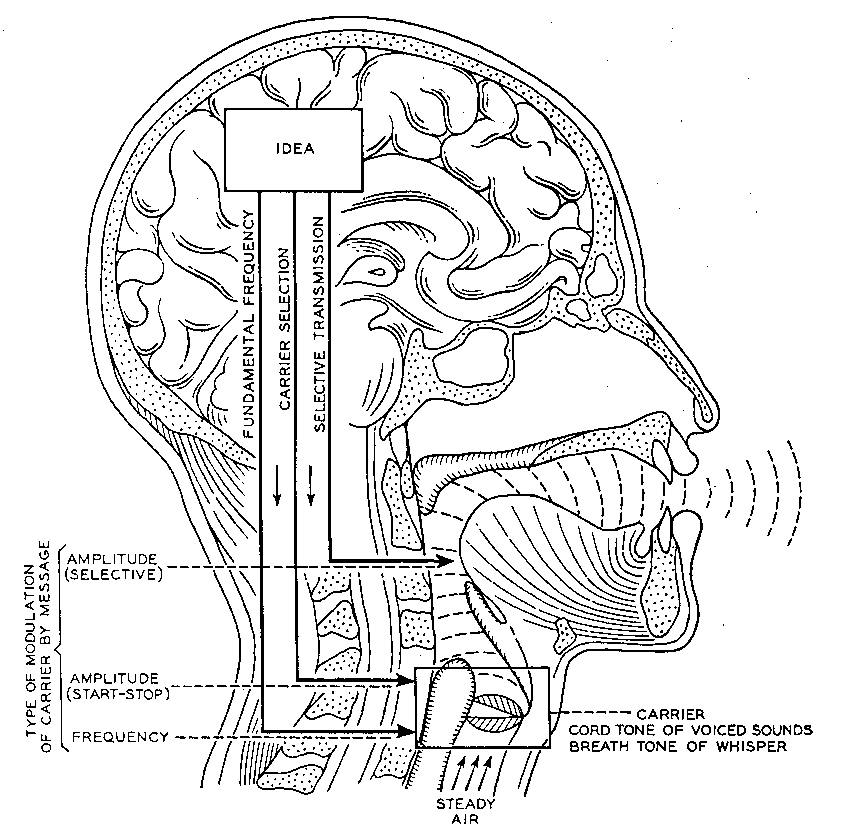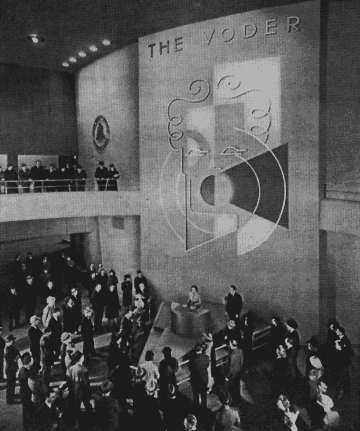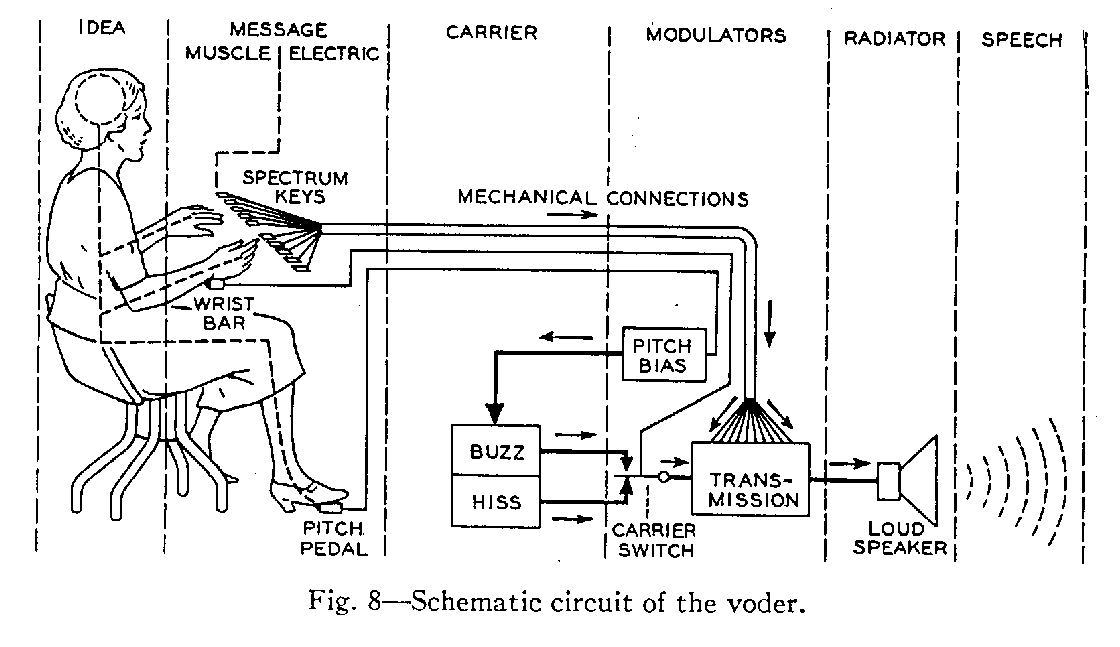Parametric Speech Synthesis
The technology of speech processing, which includes speech modeling, synthesis, encoding, and recognition, dates back to the parametric techniques introduced by Homer Dudley in the late 1930's and early 1940's. These methods are "parametric" in the sense that they construct a model of the acoustic properties of the human vocal tract, and then analyze speech by determining the values of the parameters of the model. Below is a rendition of the basic model from Dudley's 1940 paper, "The Carrier Nature of Speech," published in the The Bell System Technical Journal.

At the 1939 World's Fair in New York, Bell Labs demonstrated this principle with a device called the "Voder," shown below in action.

The voder is operated by highly trained technicians (who at the time were called "girls"). A technician would manipulate a set of analog (continuous) controls that produced speech like sounds, as in the sentence "greetings everybody":
The voder is carefully designed to match the limitations of the human operator to the needs for modeling speech. It is shown in the following schematic:

Listen to the complete Voder demonstration:

 Up to Topics
Up to Topics Previous
Previous